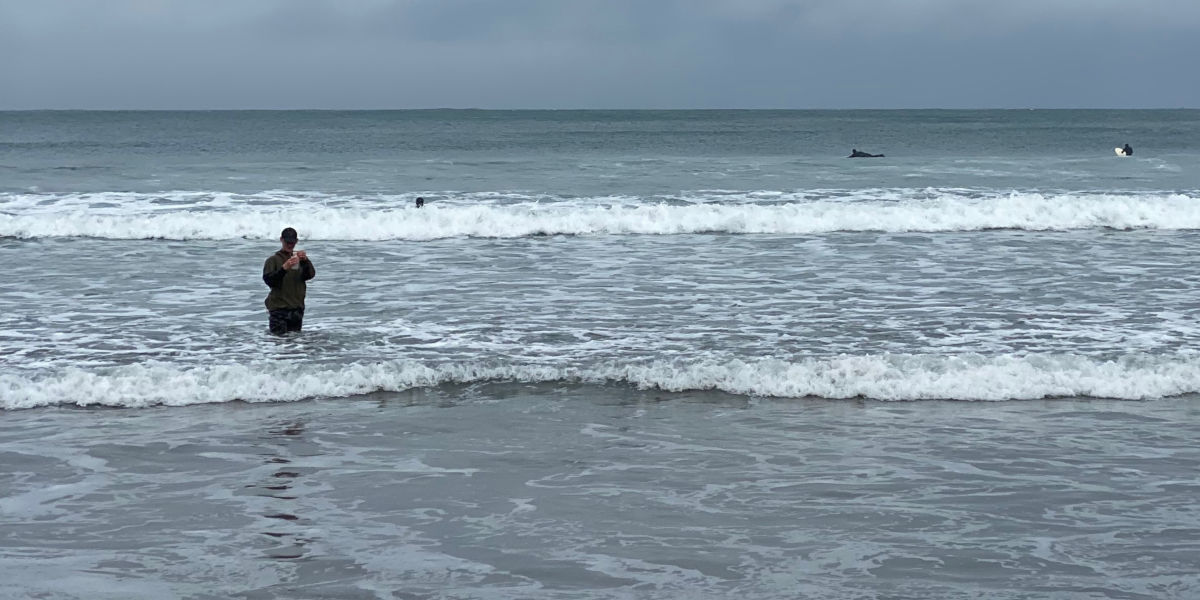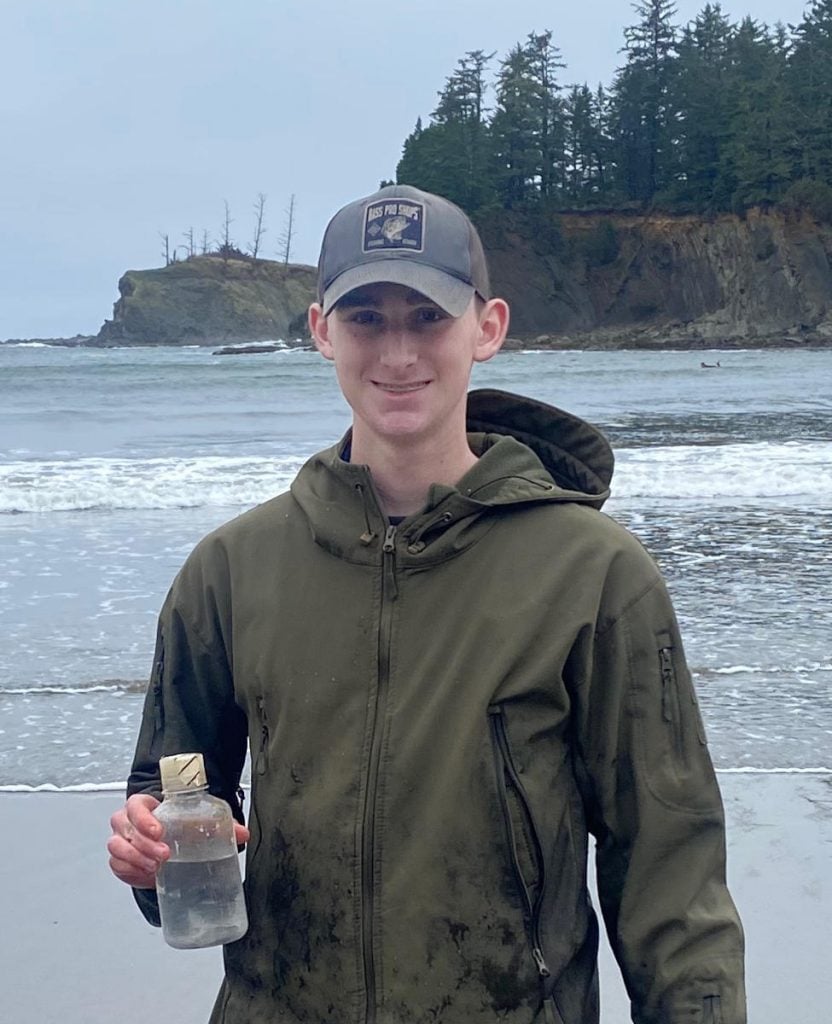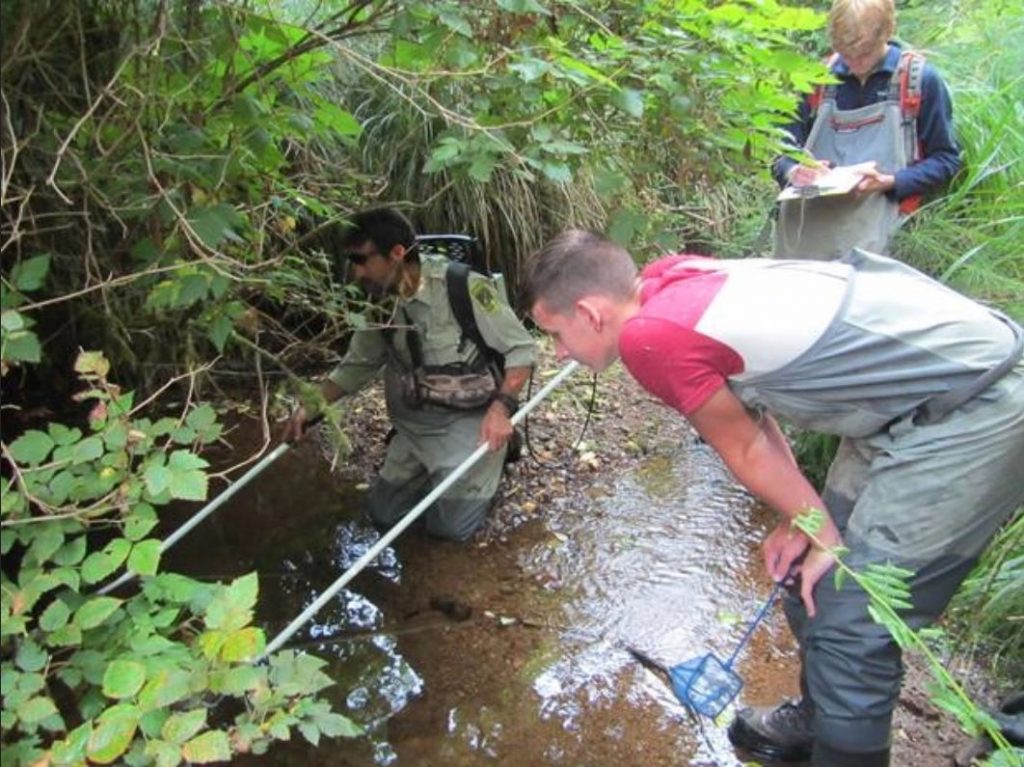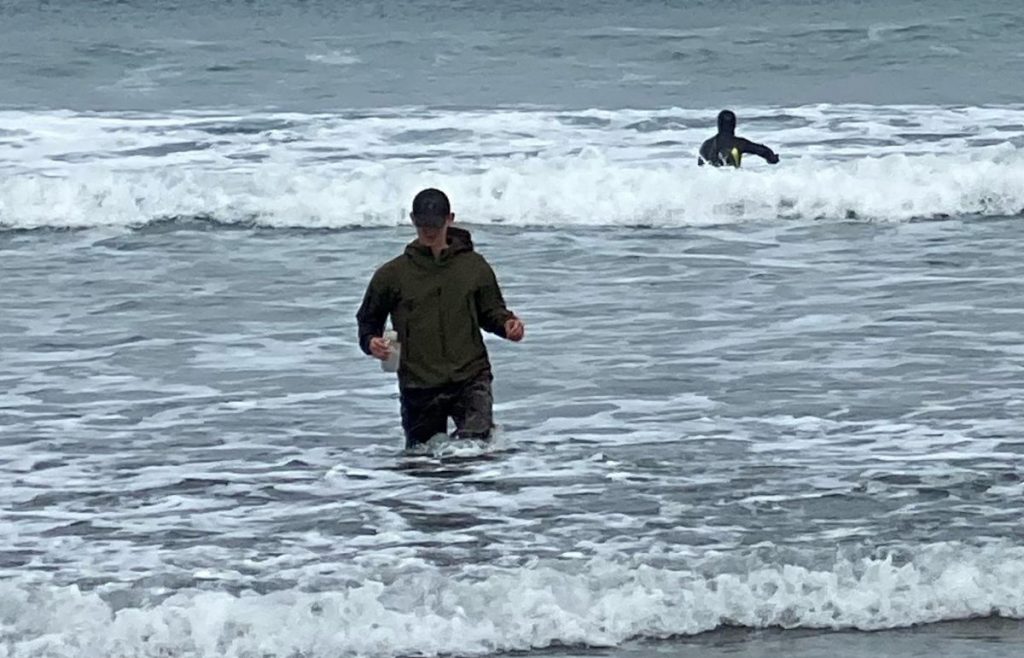
Meet Luke Donaldson, our new Blue Water Task Force volunteer for the Coos Bay Chapter. Luke is responsible for testing 5 sites in the Coos area (Bastendorff Beach, Big Creek/Sunset Bay, Lighthouse Beach, Miner Creek, Sunset Bay) on a monthly basis.

Q: It seems unusual for a high school senior to be running the Blue Water Task Force for the chapter … collecting the samples, doing the lab testing, and reporting the results online. What started you on the path that led you here?
I grew up along the Coquille River between Coquille and Bandon. Our family would go to Bullards Beach for two hours on Sundays. One week we’d walk north, and the next week walk south, generally collecting 10-15 pounds of small plastics. We had competitions for who could find the strangest object (one was a hairpin with Chinese writing on it), or the largest object.
When I was 4, my mom took me to Tide of the Toddlers, a class at the South Slough Estuarine Research Reserve (South Slough), where we learned about animals and natural objects in the Coos Estuary. In grade school, I did summer camps at the South Slough. I started volunteering at the interpretive center, helping with trail maintenance, and working at the front desk/bookstore. I helped with bird workshops, hikes, mushroom workshops, and kayak trips up the South Slough.
Q: What experiences allowed you to develop the skills and understandings you now have, which are useful working in the lab?
Between 9th and 10th grades, I was a summer intern at the South Slough for the whole summer. For part of the summer, I was paired with a college intern studying green crabs – they are an invasive species in the slough. To understand crab competition, we also collected Dungeness, red rock, and shore crabs. First, we set out different kinds of traps to see what types worked best. Then we put the different crab species together with a piece of dead fish, and monitored and observed their competition. Most of the time, the red rock crabs could fend off the green crabs. And the green crabs were more successful than the Dungeness. We attributed the differences in successful competition to the differences in their claws – Dungeness have 2 cutting claws, red rocks have 2 crushing claws (which are more powerful), and green crabs have 1 of each.

The rest of the summer, I helped out with water quality testing, and did GIS vegetation plot surveys counting bird’s beak. Bird’s beak is similar to the ice plant, but is federally listed as endangered. I also helped with eDNA surveys, where we used sampled water from the slough and tested for organic traces of organisms such as fish and invertebrates. On the freshwater side of things, we collected data about Pacific and brook lamprey in the South Slough Watershed. We used charged prods to “herd” the small lamprey, net them, measure and identify the species, and then release the lamprey. At the lab, I also updated the data in the herbarium online spreadsheet.
Q: As a senior this year, what have you been doing in school, and what are your thoughts about what’s next for you?
I earned college credit for my summer internship work. My mom asked, “What stops you from taking a college history class?” Since then, I’ve been taking two college-level courses per term as a sophomore and junior. And now as a senior at Coquille High School, I am dual-enrolled and doing a full-load of college classes. I’ve done most of the basic college classes, so next term, I’ll be taking my first fish & wildlife conservation classes.
All these experiences … I knew that I loved being outside and volunteering, but it wasn’t until I saw a National Geographic film at the Egyptian Theatre … then I knew what my purpose was, going into this field. Now I know what I’m doing it for. In college, I’m going to study natural resources and fish & wildlife conservation. After that, I’ll work with one of the organizations such as the Oregon Department of Fish & Wildlife, the Oregon Department of State Lands, or the Bureau of Land Management.

Q: As you look into the future, what is it that you want?
I had the privilege of growing up on the Southern Oregon coast. I enjoyed it, and sometimes took it for granted. I look at the clearcuts out 7 Devils Road … it’s all for the money. Those resources were there when I was born. I want those resources to be there when I pass. It’s not about me.
Q: Anything else you’d like to add?
“Don’t take it for granted.” If everyone starts saying that, then maybe it can come true. Plastic pollution will be minimized … maybe even non-existent. Everyone shares the same appreciation for the planet. This isn’t our world … it’s the world’s world … and we need to respect it.
